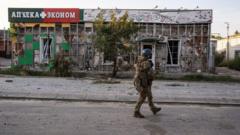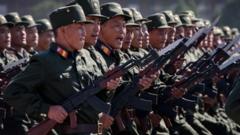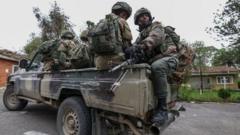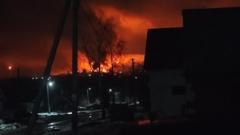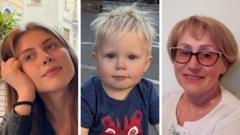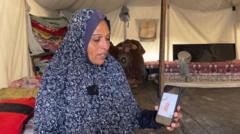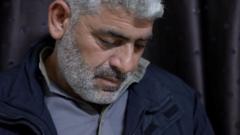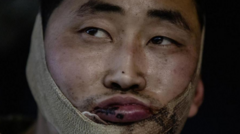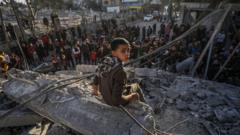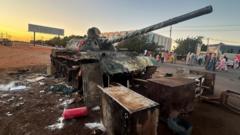In a significant shift in the war narrative, the invasion highlights the unexpected complexity of civilian experiences amid military conflict.
**Civilians Reflect on Ukraine's Unexpected Incursion into Russian Territory**

**Civilians Reflect on Ukraine's Unexpected Incursion into Russian Territory**
As the war escalates, the impact of Ukraine's invasion is now felt by Russian civilians in the Kursk region.
The drone footage from Korenevo village in the Kursk region reveals a shocking reality: at least seven bodies, mostly dressed in civilian clothes, lie on a desolate road near the site of recent military operations. The scene, littered with abandoned vehicles and decomposing remains, encapsulates the tragic consequences of Ukraine's foray into Russian soil—a stark first since World War II.
These harrowing images surfaced during the initial days of Ukraine's surprise incursion, marking a key turning point in the ongoing conflict. The street's grim atmosphere tells the story of a battleground where both Ukrainian and Russian forces have exchanged fire, complicating any assessments of responsibility for the tragedies that unfolded.
Witnesses, including civilians from the area, have shared their experiences in interviews, shedding light on the challenges faced by ordinary Russians. The military actions have led to damaged communication infrastructure, forcing residents into a silence amplified by state-controlled narratives that often obscure the human toll of warfare.
Independent reporting has proven difficult due to the overwhelming presence of propaganda from both sides. While Ukrainian forces push through previously Russian-held territories, the lives of those caught in the crossfire—civilians enduring the fallout of military engagements—underscore the precariousness of safety and the unpredictable effects of war beyond borders.
The nature of this conflict is paradoxical; a nation known for defense is experiencing invasion and occupation for the first time in decades, leaving its citizens grappling with shock and uncertainty. The reality on the ground contrasts sharply with the traditional view of warfare, challenging perceptions and highlighting the plight of innocent bystanders impacted by decisions made by those in power.
As tensions continue to escalate, the main question remains: how will these events reshape the futures of both nations embroiled in this devastating conflict?
These harrowing images surfaced during the initial days of Ukraine's surprise incursion, marking a key turning point in the ongoing conflict. The street's grim atmosphere tells the story of a battleground where both Ukrainian and Russian forces have exchanged fire, complicating any assessments of responsibility for the tragedies that unfolded.
Witnesses, including civilians from the area, have shared their experiences in interviews, shedding light on the challenges faced by ordinary Russians. The military actions have led to damaged communication infrastructure, forcing residents into a silence amplified by state-controlled narratives that often obscure the human toll of warfare.
Independent reporting has proven difficult due to the overwhelming presence of propaganda from both sides. While Ukrainian forces push through previously Russian-held territories, the lives of those caught in the crossfire—civilians enduring the fallout of military engagements—underscore the precariousness of safety and the unpredictable effects of war beyond borders.
The nature of this conflict is paradoxical; a nation known for defense is experiencing invasion and occupation for the first time in decades, leaving its citizens grappling with shock and uncertainty. The reality on the ground contrasts sharply with the traditional view of warfare, challenging perceptions and highlighting the plight of innocent bystanders impacted by decisions made by those in power.
As tensions continue to escalate, the main question remains: how will these events reshape the futures of both nations embroiled in this devastating conflict?

